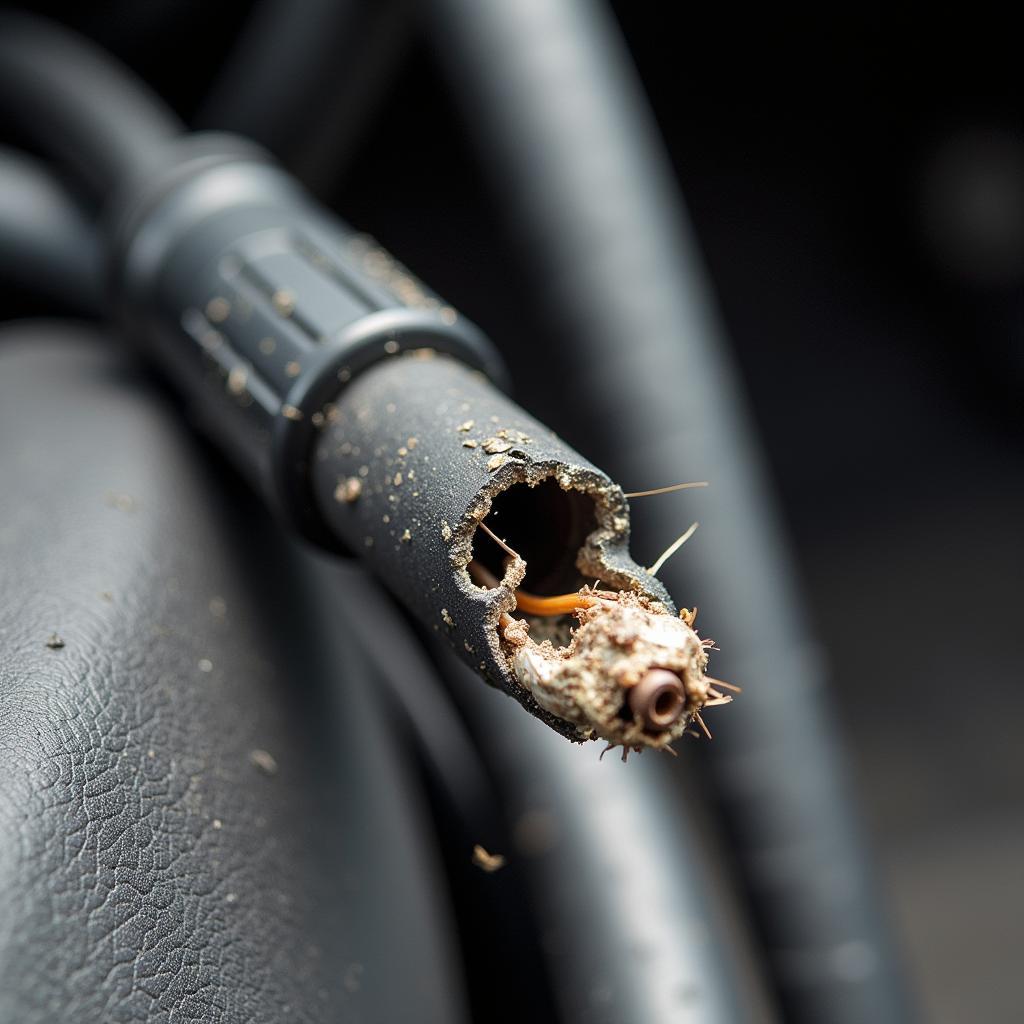Troubleshooting and fixing car stereo speakers can be a frustrating experience. Whether you’re dealing with distorted audio, no sound at all, or intermittent issues, this guide will provide you with the knowledge and steps needed to diagnose and fix the problem, getting your car’s sound system back on track.
Diagnosing the issue is the first crucial step. Is it just one speaker that’s out, or are all of them silent? Is the sound distorted, or is there simply no output? These initial checks will help narrow down the possible causes and save you valuable time. Some common culprits include blown speakers, damaged wiring, loose connections, a faulty head unit, or even a problem with the amplifier. Let’s dive into how to identify and fix these issues.
Identifying the Problem: Where’s That Annoying Buzz Coming From?
Before you grab any tools, it’s essential to pinpoint the source of the problem. Start by checking the balance and fade settings on your car stereo. An incorrect balance setting might make you think a speaker is blown when it’s merely receiving no signal. Next, turn up the volume gradually. Does the distortion get worse as the volume increases? This can indicate a blown speaker or a problem with the amplifier.
Next, check the wiring. Look for any loose or damaged wires connected to the speakers. A visual inspection can often reveal obvious issues like frayed wires or loose connections. If everything appears fine visually, you might need to use a multimeter to test for continuity in the wiring.
Testing the Speakers: Is It Really Blown?
A simple test can determine if a speaker is blown. Disconnect the speaker wires and connect them to a known good speaker. If the good speaker works, the original speaker is likely the culprit. Conversely, if the good speaker doesn’t work, the problem lies elsewhere in the system, perhaps in the wiring or the head unit.
how to fix broken car speaker offers more tips on troubleshooting blown speakers.
Fixing Loose Connections: A Simple Fix
Loose connections are often the easiest fix. Securely reconnect any loose wires and ensure all connections are tight. Sometimes, simply reseating the connectors can solve the problem. If the connections are corroded, clean them with contact cleaner before reconnecting.
Replacing a Blown Speaker: How to Choose the Right One
If a speaker is blown, replacement is usually the best option. When choosing a replacement speaker, consider factors like size, impedance, and power handling. Matching these specifications to your car’s stereo system will ensure optimal performance.
Dealing with Wiring Issues: A Bit More Complex
Damaged wiring can be more challenging to fix. If you’re comfortable working with electrical wiring, you can try repairing the damaged sections. However, if the wiring is extensively damaged, it’s often best to replace the entire wiring harness.
car audio fixing dunstable can help if you’re located near Dunstable and need professional assistance.
Checking the Head Unit and Amplifier: The Heart of the System
If the speakers and wiring are fine, the problem might lie in the head unit or amplifier. Check the head unit for any error messages or unusual behavior. If you suspect the amplifier is faulty, consider taking your car to a professional car audio specialist for diagnosis and repair.
 Troubleshooting the Car Stereo Head Unit
Troubleshooting the Car Stereo Head Unit
Preventing Future Problems: Keep the Music Playing
Regular maintenance can help prevent car stereo speaker issues. Avoid playing music at excessively high volumes for extended periods, as this can strain the speakers and amplifier. Also, ensure your car’s battery is in good condition, as a weak battery can cause power fluctuations that can damage the stereo system.
how to fix speakers in a car offers further guidance on maintaining your car’s audio system.
“A common mistake people make is cranking up the bass too high. This can easily blow your speakers,” says John Davis, a certified car audio technician with over 20 years of experience. “Remember, quality over quantity when it comes to volume.”
Another expert, Sarah Mitchell, an automotive electrical engineer, adds, “Regularly inspecting your wiring for any signs of damage can prevent bigger problems down the line. A little preventative maintenance can save you a lot of headaches.”
How to Fix Volume on Car Radio: When the Sound Just Isn’t There
Sometimes, the issue isn’t with the speakers themselves, but rather the volume control on your car radio. This can be a frustrating problem, especially if you can’t adjust the volume at all. Fortunately, there are several steps you can take to troubleshoot and fix this issue.
how to fix volume on car radio provides step-by-step instructions on tackling volume control problems.
In conclusion, fixing car stereo speakers can often be achieved with a little troubleshooting and some basic tools. By following the steps outlined in this guide, you can identify the problem and take the necessary steps to get your car’s audio system back in working order. Remember, if you’re not comfortable working with electrical systems, it’s always best to consult a professional. Contact Autotippro at +1 (641) 206-8880 or visit our office at 500 N St Mary’s St, San Antonio, TX 78205, United States for expert assistance.
fixing cracking clear coat on a car is another helpful resource from AutoTipPro.







Leave a Reply